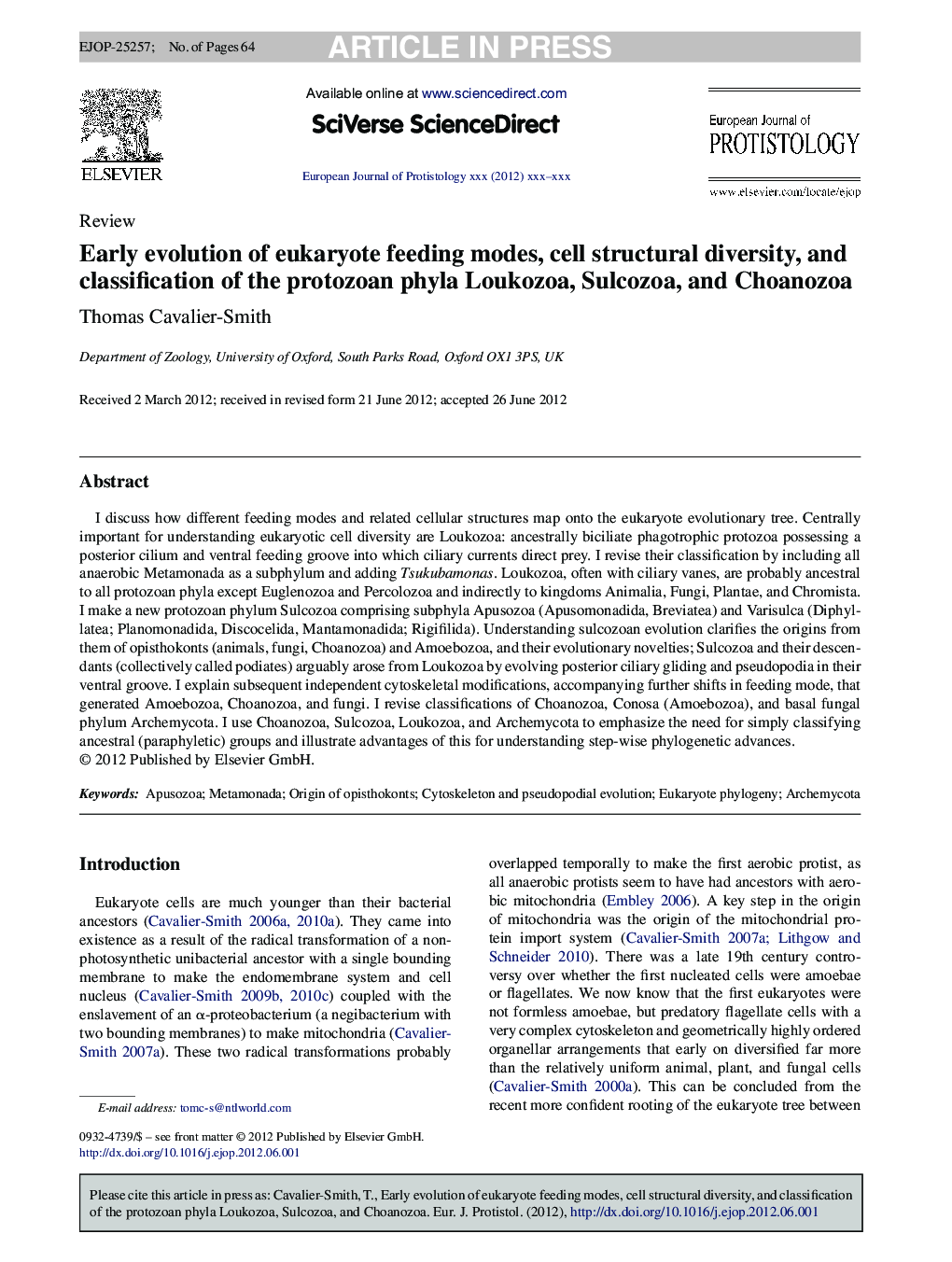| کد مقاله | کد نشریه | سال انتشار | مقاله انگلیسی | نسخه تمام متن |
|---|---|---|---|---|
| 8383424 | 1543297 | 2013 | 64 صفحه PDF | دانلود رایگان |
عنوان انگلیسی مقاله ISI
Early evolution of eukaryote feeding modes, cell structural diversity, and classification of the protozoan phyla Loukozoa, Sulcozoa, and Choanozoa
دانلود مقاله + سفارش ترجمه
دانلود مقاله ISI انگلیسی
رایگان برای ایرانیان
موضوعات مرتبط
علوم زیستی و بیوفناوری
علوم کشاورزی و بیولوژیک
علوم کشاورزی و بیولوژیک (عمومی)
پیش نمایش صفحه اول مقاله

چکیده انگلیسی
I discuss how different feeding modes and related cellular structures map onto the eukaryote evolutionary tree. Centrally important for understanding eukaryotic cell diversity are Loukozoa: ancestrally biciliate phagotrophic protozoa possessing a posterior cilium and ventral feeding groove into which ciliary currents direct prey. I revise their classification by including all anaerobic Metamonada as a subphylum and adding Tsukubamonas. Loukozoa, often with ciliary vanes, are probably ancestral to all protozoan phyla except Euglenozoa and Percolozoa and indirectly to kingdoms Animalia, Fungi, Plantae, and Chromista. I make a new protozoan phylum Sulcozoa comprising subphyla Apusozoa (Apusomonadida, Breviatea) and Varisulca (Diphyllatea; Planomonadida, Discocelida, Mantamonadida; Rigifilida). Understanding sulcozoan evolution clarifies the origins from them of opisthokonts (animals, fungi, Choanozoa) and Amoebozoa, and their evolutionary novelties; Sulcozoa and their descendants (collectively called podiates) arguably arose from Loukozoa by evolving posterior ciliary gliding and pseudopodia in their ventral groove. I explain subsequent independent cytoskeletal modifications, accompanying further shifts in feeding mode, that generated Amoebozoa, Choanozoa, and fungi. I revise classifications of Choanozoa, Conosa (Amoebozoa), and basal fungal phylum Archemycota. I use Choanozoa, Sulcozoa, Loukozoa, and Archemycota to emphasize the need for simply classifying ancestral (paraphyletic) groups and illustrate advantages of this for understanding step-wise phylogenetic advances.
ناشر
Database: Elsevier - ScienceDirect (ساینس دایرکت)
Journal: European Journal of Protistology - Volume 49, Issue 2, May 2013, Pages 115-178
Journal: European Journal of Protistology - Volume 49, Issue 2, May 2013, Pages 115-178
نویسندگان
Thomas Cavalier-Smith,